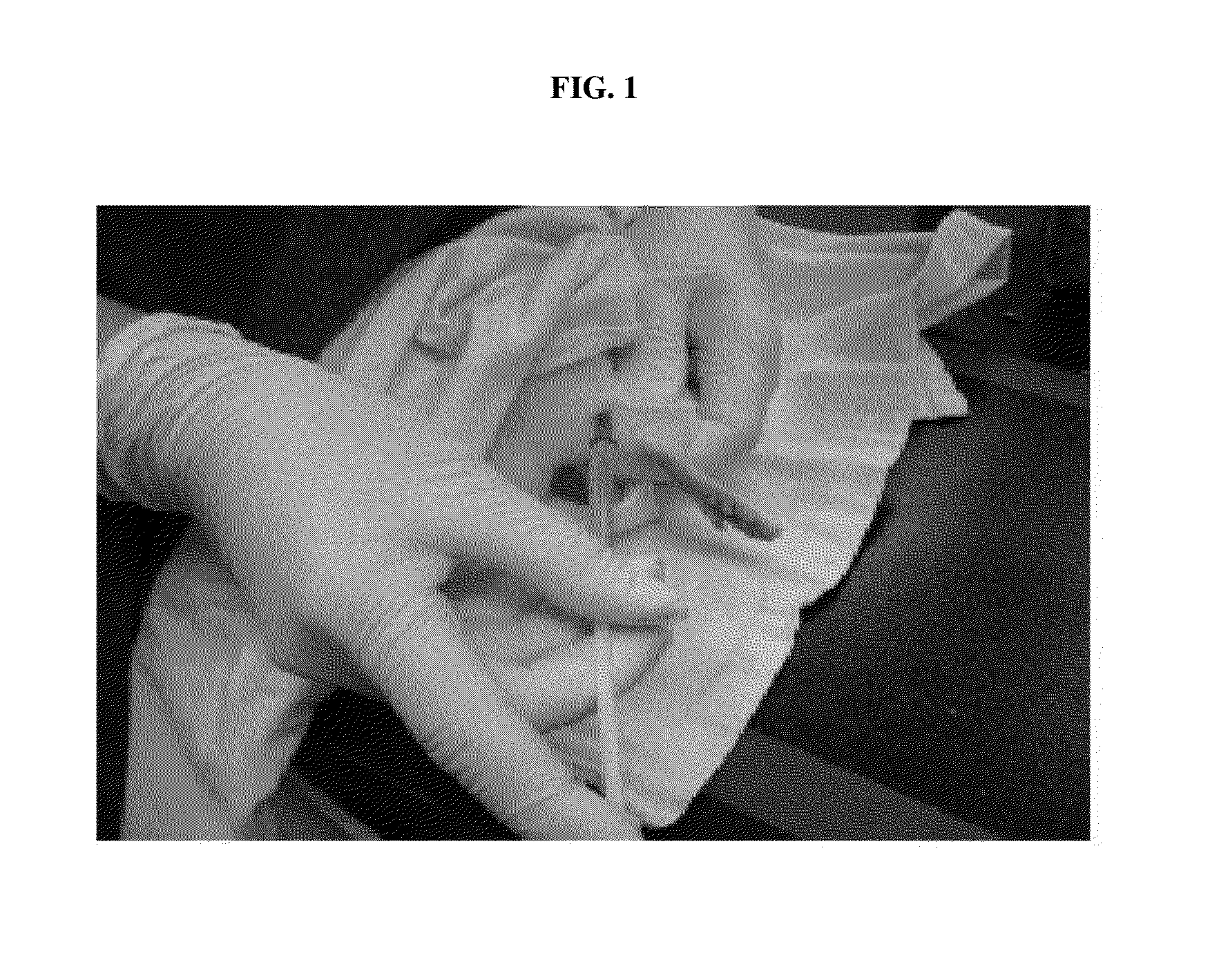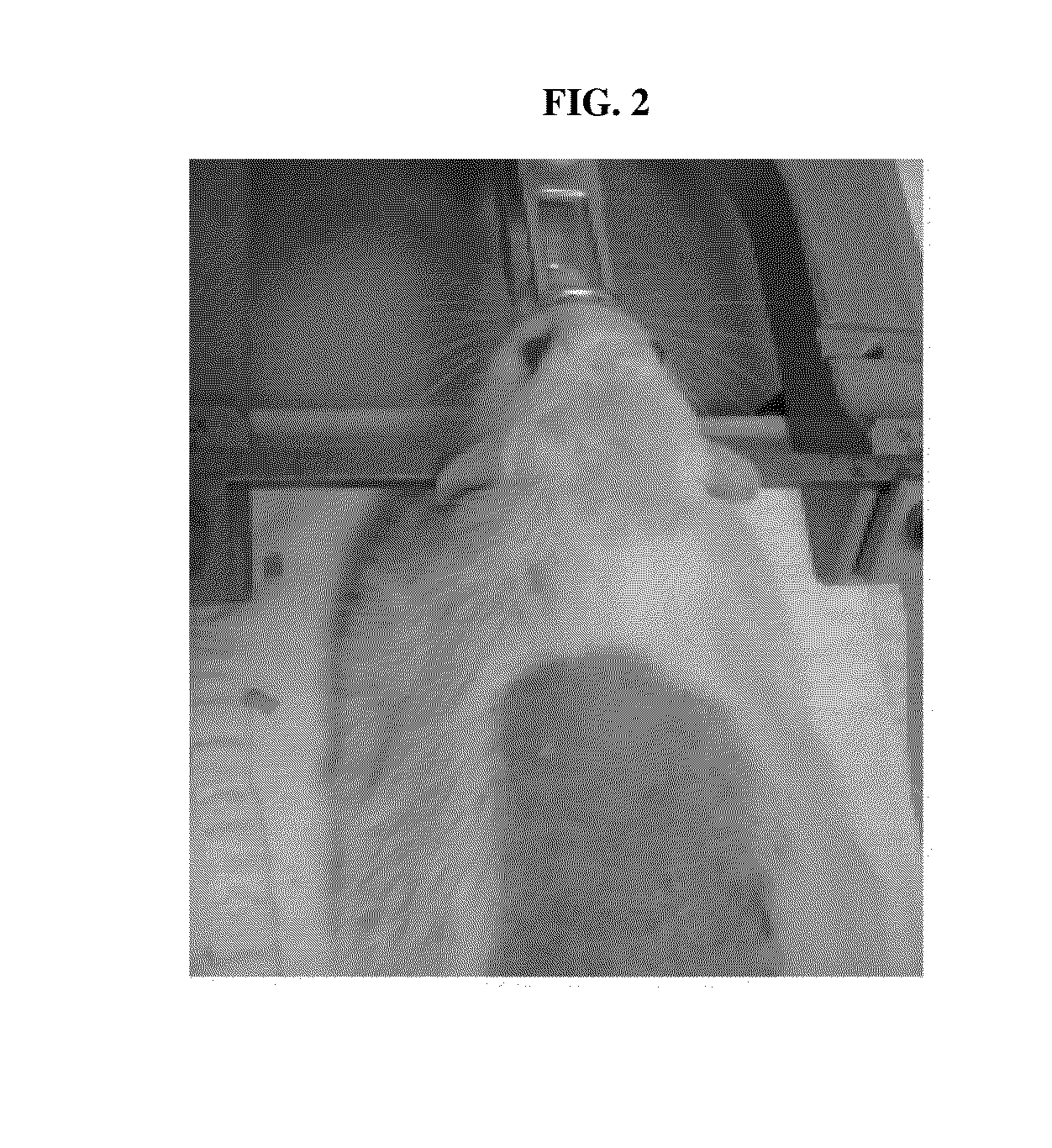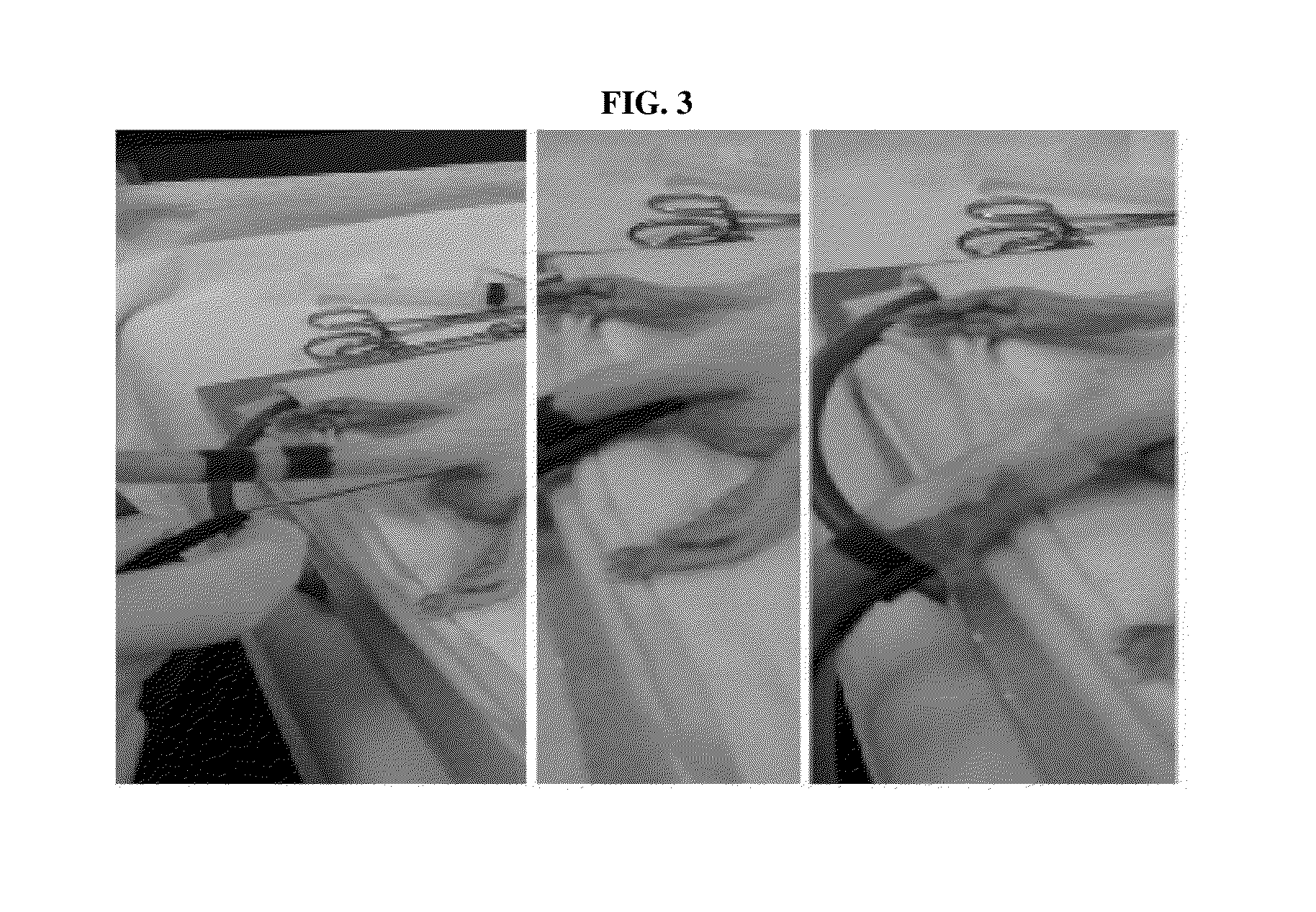Animal model for evaluating performance of hemostatic agent for inducing hemorrhage in common carotid artery or superior sagittal sinus, and use thereof
a hemostatic agent and performance evaluation technology, applied in the field of animal models for evaluating hemostatic performance, can solve the problems of large amount of blood loss, difficult selection of blood vessels, and difficulty in evaluating the effect of hemostatic agents
- Summary
- Abstract
- Description
- Claims
- Application Information
AI Technical Summary
Benefits of technology
Problems solved by technology
Method used
Image
Examples
example 1
Preparation of Animal Model (Artery) for Evaluating Hemostatic Effects
[0055]To prepare an animal model for evaluating hemostatic effects, the hind leg muscle of a rat was anesthetized by intramuscular injection of 0.1 ml / 100 g of Zoletil / Rompun (5 ml Zoletil+2.5 ml Rompun), and after 20 minutes, a surgical operation for the rat was started (FIG. 1).
[0056]The animals used in this Example were 10-week-old SD rats (weight: about 350-450 g).
[0057]In addition, the site to be surgically operated was widely shaved, and the rat was fixed on a stereotaxic frame (FIG. 2). To maintain the body temperature at a constant level, a body temperature sensor with a warm pad was inserted into the anus of the rat and fixed (FIG. 3). The shaved portion of the animal was disinfected with betadine, and then the midline of a site ranging from the chest line to the neck portion was incised by about 3-4 cm. Next, as shown in FIG. 4, connective tissues were removed with cotton swabs, and omohyoid muscle exten...
example 2
Preparation of Animal Model (Vein) for Evaluating Hemostatic Effects
[0060]To prepare an animal model for evaluating hemostatic effects, the hind leg muscle of a rat was anesthetized by intramuscular injection of 0.1 ml / 100 g of Zoletil / Rompun (5 ml Zoletil+2.5 ml Rompun), and after 20 minutes, a surgical operation for the rat was started (FIG. 1).
[0061]The animals used in this Example were 10-week-old SD rats (weight: about 350-450 g).
[0062]In addition, the site to be surgically operated was widely shaved, and the rat was fixed on a stereotaxic frame (FIG. 2). To maintain the body temperature at a constant level, a body temperature sensor with a warm pad was inserted into the anus of the rat and fixed (FIG. 3). The shaved portion of the animal was disinfected with betadine, and then the midline of a site ranging from the middle of the forehead to the ear portion was incised by about 2-3 cm using a scalpel (No. 10). The incised portion was opened and fixed with forceps, and connecti...
example 3
Preparation of Animal Model (Liver) for Evaluating Hemostatic Effects
[0064]To prepare an animal model for evaluating hemostatic effects, the hind leg muscle of a rabbit was anesthetized by subcutaneous injection of 0.5 ml / kg of Zoletil / Rompun (5 ml Zoletil+2.5 ml Rompun), and after 20 minutes, a surgical operation for the rabbit was started.
[0065]The animals used in this Example were New Zealand White rabbits (weight: about 2.3-3.0 kg).
[0066]In addition, the site to be surgically operated was widely shaved and locally anesthetized with lidocaine, and the animal was fixed on a surgical operation table equipped with hyperhypo thermia.
[0067]The thorax was opened by incision, and then the liver central lobe was exposed onto a gauze wet with sterile physiological saline. The middle portion of the liver (central lobe) was pierced to a depth of about 2-3 mm using a biopsy punch (d=6 mm) to induce hemorrhage, thereby preparing an animal model.
PUM
 Login to View More
Login to View More Abstract
Description
Claims
Application Information
 Login to View More
Login to View More - R&D
- Intellectual Property
- Life Sciences
- Materials
- Tech Scout
- Unparalleled Data Quality
- Higher Quality Content
- 60% Fewer Hallucinations
Browse by: Latest US Patents, China's latest patents, Technical Efficacy Thesaurus, Application Domain, Technology Topic, Popular Technical Reports.
© 2025 PatSnap. All rights reserved.Legal|Privacy policy|Modern Slavery Act Transparency Statement|Sitemap|About US| Contact US: help@patsnap.com



